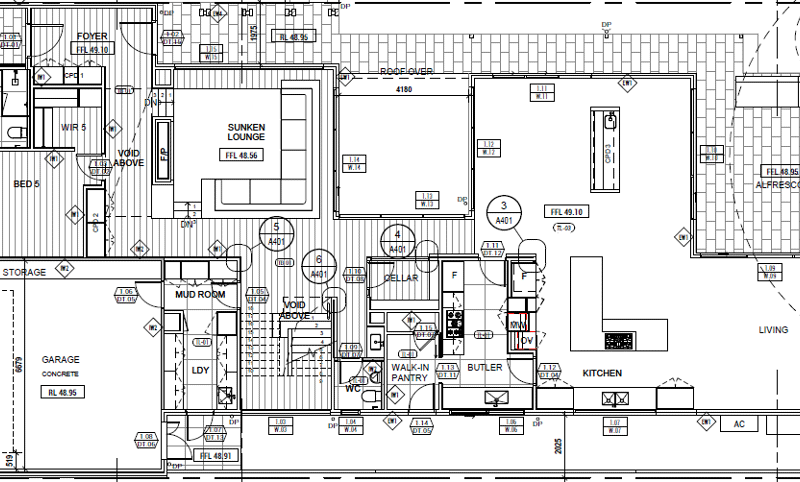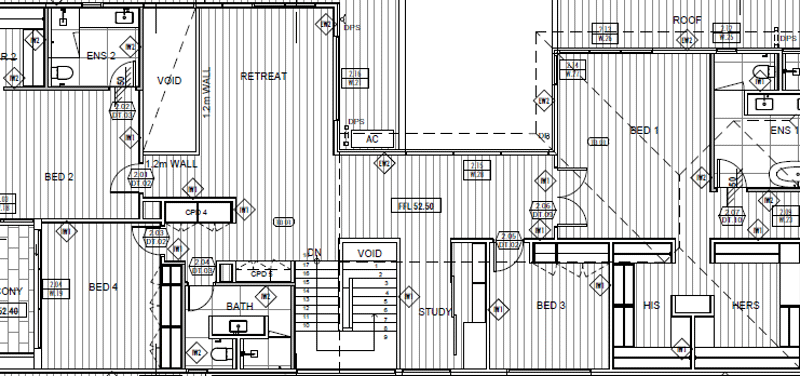What is the Difference Between a 6-Star & 7-Star Energy Rating?

Australia has made sustainable homes and energy-efficient residential spaces a policy priority. Most territories have already upgraded to the new 7-star energy rating, while the rest are also preparing for this move. This is being done to achieve Net Zero by 2050, and residential energy efficiency is a major part of it.
The National Construction Code (NCC) 2022 oversees this process, changing energy efficiency requirements, condensation, and liveable housing provisions. Since upgrading from a 6-star to a 7-star rating, a complete home assessment with a room-by-room analysis is required.
What do these ratings mean, and what is the difference between a 6-star & 7-star energy rating? Is it possible to upgrade from a 6-star Rating to a 7-star rating? If you’re in the construction business, these are key questions to understand.
Let’s answer these in this detailed write-up on energy ratings in Australia.
What is an Energy Rating in Homes?
Energy rating is a standardized system used to measure the energy efficiency of homes and residential spaces. It tells you how much energy a residential space uses for heating or cooling. These ratings provide a simple way to compare the energy consumption of different residential designs and make informed decisions about upgrading per the clients brief.
The Nationwide House Energy Rating Scheme (NatHERS) uses a home efficiency scheme from 1 to 10, with 6 being the minimum level mandated for all Australian homes since 2010 and 7 stars being the updated minimum since the introduction of the National Construction Code 2022.
How are Energy Ratings Determined?
Energy ratings are typically calculated based on energy consumption over year period. Specialized NatHER software is used for this purpose. Here is what this model studies to come up with an energy rating result:
- The NatHERS climate zone
- A home’s orientation
- The design layout
- Construction methods and materials used for floor, windows, walls, and roof
- How well-designed a home is to take advantage of the local breeze and winter sun
- How well-shaded it is from sun rays
After the software runs the simulations of the model, an star rating is assigned to the home as well as heating and cooling loads for each room. It can architects and designer with the design and where to make solar passive design improvements if areas of the dwelling are not performing well.
6-Star Energy Rating – An Overview
A 6-star energy rating has the been the minimum for over a decade, starting in 2010, saving 24% more energy than a 5-star rated home. This standard applies to the building envelope (the external structure), including its windows, floor, roof, and walls. The propose of the star energy rating system is to determine how much mechanical heating and cooling is required to keep the dwelling confortable for the different seasons and what levels of insulation and glazing is required to achieve this.
It has not been to difficult to meet a 6 star energy rating with standard insulation and double glazing if the home is not overly big and the glazing is not overdone.
The energy rating system also applies to renovation/alterions, whereby, if you’re altering over 50% of the building to reach the 6-star rating, you must do it to meet the construction as per Building Regulation 233. However, you can request partial compliance for the existing building fabric where compliance requires too much construction work or is technically impractical.
7-Star Energy Rating – An Overview
According to the National Construction Code (NCC) 2022, determined under the Nationwide House Energy Rating Scheme (NatHERS), the 7-Star Rating is a step above the 6-Star Rating in efficiency and energy consumption. Estimates suggest that 7-star homes require 20-25% less energy than 6-star homes, a considerable jump in efficiency.
Many localities in Australia have made a 7-star Rating mandatory for homes. This means that even if you are designing or constructing a home in these places, you must comply with a 7-star Rating.
Considerable thought needs to be applied when designing homes with the new NCC 2022 requirements as it is no longer an option to just add double glazing and meet compliance. Passive solar design principles must be incorporated to ensure that both compliance can be met and the glazing upgrades does not exceed budget expectations.
Difference Between a 6-Star & 7-Star Energy Rating
Unfortunately, it is not just a matter of ticking a 7-star option in the software when a 7 star energy rating result is required. If we have a set of construction drawings we are working on that we have achieved 6 stars, the only way to bring this up to 7-stars is by upgrading the insulation (if there is still cavity space to do so) and upgrading the glazing specifications. These upgrades will add tens of thousands in costs.
Let’s me demonstrate the differences between the specifications for 6-Star and the 7-Star Ratings for the same design:
Case Study
Ground Floor

First Floor

| 6 Star Specifications | 7 Star Specifications | ||
|---|---|---|---|
| Insulation | Insulation | ||
| Ceiling | R6.0 | Ceiling | R7.0 |
| External walls | R2.5 | External walls | R2.7 |
| Slab | R2.5 | Slab | R2.5 |
| Glazing | Glazing | ||
| Awning | U-Value: 3.1 | Awning | U-Value: 1.67 |
| SHGC:0.39 | SHGC: 0.31 | ||
| Fixed/Sliding Doors | U-Value 2.90 | Fixed | U-Value: 1.46 |
| SHGC: 0.51 | SHGC: 0.45 | ||
| Sliding Door | U-Value: 1.85 | ||
| SHGC: 0.44 |
There is a big upgrade in both glazing and insulation specifications, which will add considerable costs to the build. The glazing framing will also need to be upgraded from aluminum to uPVC.
Current Energy Efficiency Standards in Australia
The current state of home energy efficiency standards is used in Australia for sustainable homes.
- Victoria: 7-Star since October 2024
- New South Wales: 7-Star for new residential buildings
- Australian Capital Territory: 7-Star since January 2024
- South Australia: 7-Star since October 2024
- Queensland: 7-Star for all new homes
- Western Australia: Currently 6-Star, but moves to 7-Star from October 2025
- Tasmania: Currently 6-Star, but is likely to upgrade to 7-Star in 2025
- Northern Territory: 6-Star
This chart shows Australia is gradually moving to the 7-Star Rating to make residential buildings more energy efficient and meet the 2050 net-zero goals.
Conclusion
Constructing homes with 7-star Energy Ratings or upgrading already-built spaces is not only environmentally sustainable but also saves a home owner a lot of money in the long run, however, it will become a costly process when passive design principles are ignored.
So, if you’re in the construction sector and want to design or construct modern, eco-friendly homes, look no further than Passive Energy. We are a leading name in sustainability reports for planning and building permits.
Once you engage us in the design phase, we will evaluate your residential space with a room-by-room analysis and identify areas where heating and cooling can be improved. Whether you’re building a completely new home or adding an extension, our analysis and reporting ensure maximum thermal comfort and minimise upgrades cost where possible.
Partner with us today and design homes that affordably reach 7-stars .